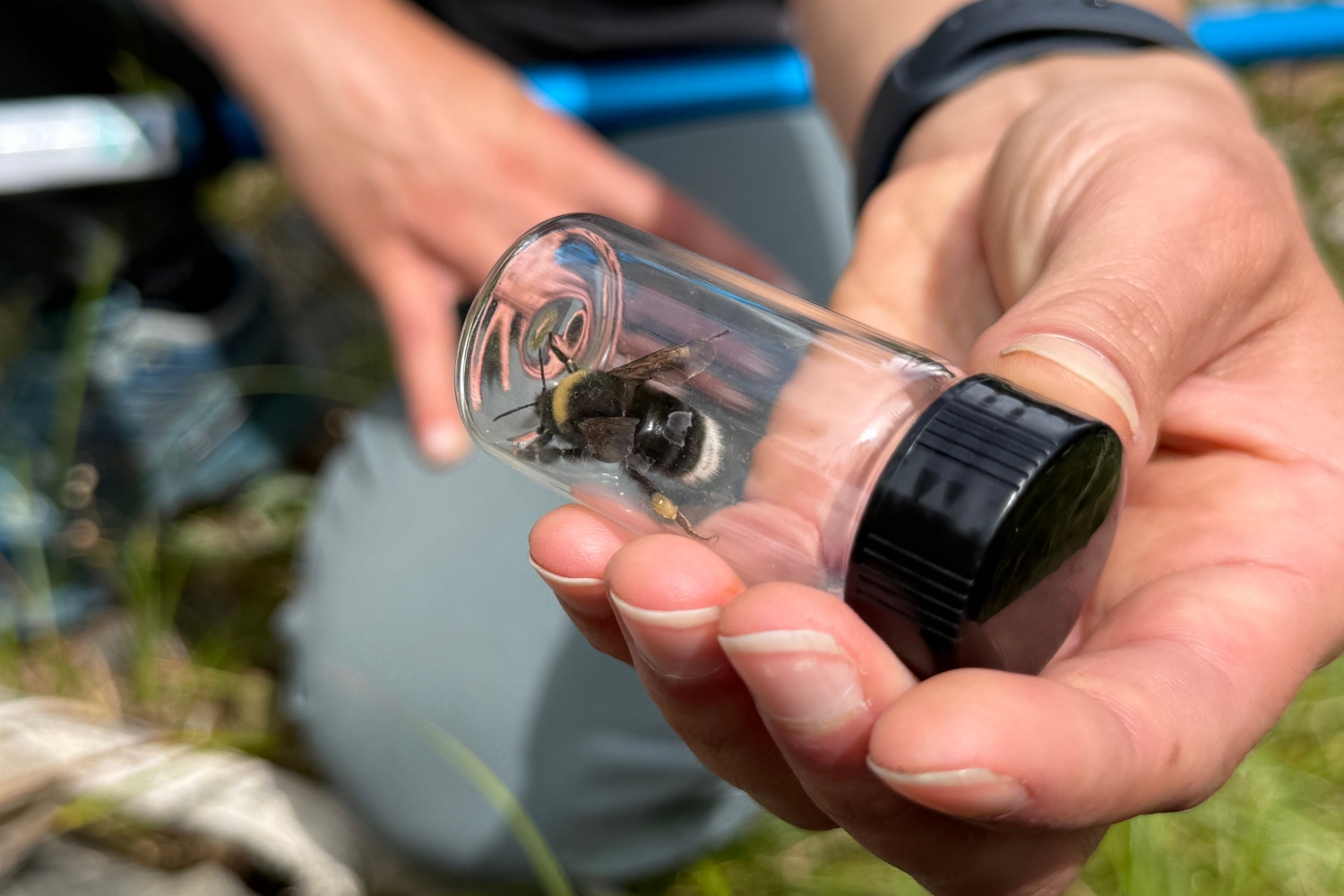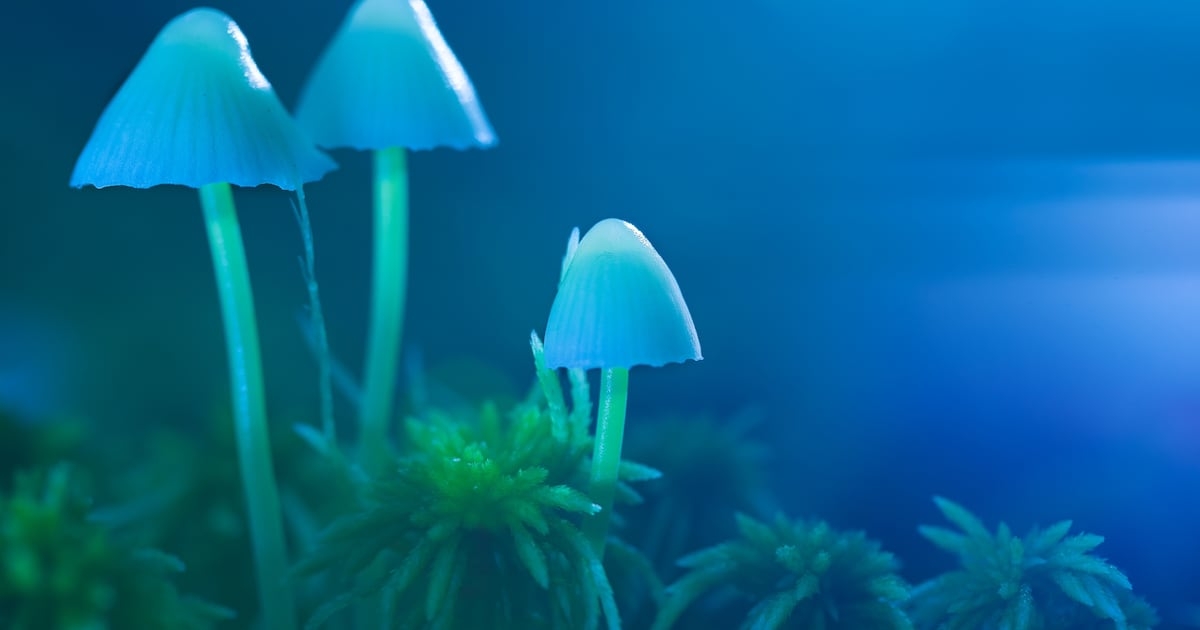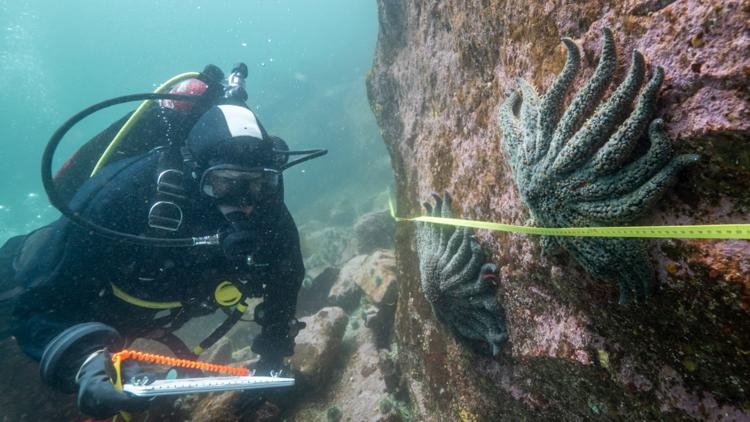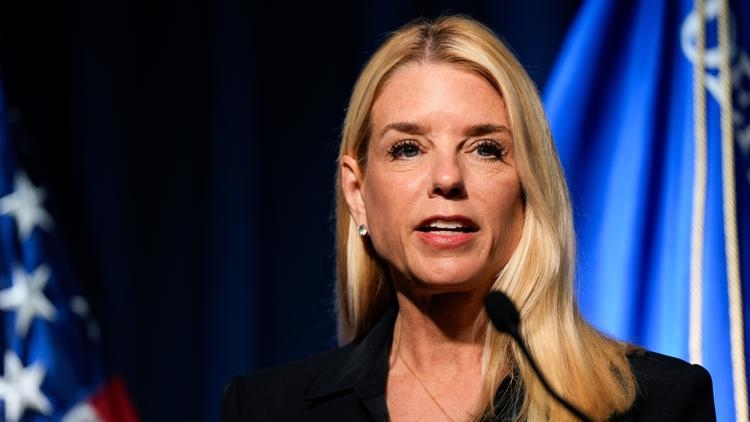

Published on: 08/03/2025
This news was posted by Oregon Today News
Description
One of the Northwest’s most common animals has all but disappeared from much of the region.
Citizen-scientists gathered in a wildflower meadow in the Washington Cascades in July to help the western bumblebee keep buzzing through the air.
Nearly a mile high in the Wenatchee Mountains, the fireweed and angelica were blooming, and the bumblebees were having a field day.
Melissa Nuñez chased one with a net on a long pole.
She thrashed her net on top of a hot-pink stalk of fireweed flowers, like a lacrosse player making a shot on goal.
“I think I got him,” Nuñez said as she peered through the fine white mesh. “No, I didn’t.”
Nuñez was part of a group of volunteers learning how to collect and study rare bumblebees and release them unharmed.
“Not easy,” she said.

Their instructor was endangered-species biologist Molly Martin with the Xerces Society for Invertebrate Conservation.
“Don’t give yourself a hard time if your first few get away or you can’t get them in the net,” Martin told the net-wielding volunteers. “In graduate school, we called it our batting average: how often you actually got it in the net, in the vial. The averages were pretty low at the beginning.”
Xerces is a Portland-based nonprofit dedicated to saving invertebrates, some of the less-beloved members of the animal kingdom.
Xerces has to overcome many people’s discomfort with creepie-crawlies and their bias toward majestic wildlife like orcas or bears, sometimes known as charismatic megafauna.
“I would say bumblebees are probably the entry drug to other insects,” Martin said. “People can be grossed out by spiders or beetles or that kind of thing, but bumblebees, they’re cute. They’re fuzzy. Charismatic mini-fauna, not the charismatic megafauna.”
Beyond their fuzzy charisma, bumblebees are economic powerhouses. By some estimates, wild insects pollinate more than $5 billion in crops annually in the United States, from soybeans to strawberries.
Washington has 28 native species of bumblebees, with eight of them, including the western bumblebee, in some degree of peril, conservation-wise.
“More than 25% of North American bumblebees are at risk of extinction,” Martin said. “So one in four, and western bumblebee is up there.”

The western bumblebee (Bombus occidentalis) was once common from Alaska to New Mexico. Like many insects, it has become rare in much of its range. It is almost gone from the lowlands of western Washington and western Oregon. Its remaining strongholds are in the mountains: Development, pesticides, and a warming climate have forced it to seek cooler, cleaner, higher locations.
“Increasingly, common but understudied species are quietly disappearing over short time periods. The global decline of insect pollinators is an example,” U.S. Geological Survey biologist Will Janousek and colleagues wrote in a 2023 study of the western bumblebee’s “drastic” decline since the 1990s.
Bumblebee surveys like the volunteers were learning to do in the mountains outside of Wenatchee have helped biologists find the most critical places to keep the buzz alive.
With their chunky, fuzzy bodies, bumblebees can pollinate flowers that other bees can’t.
“They do this thing called buzz pollination, where they vibrate a certain frequency to release pollen from certain plants, like huckleberries,” Martin said. “So they’re really key to some ecosystems.”
In short: no bumblebees, no huckleberries. No huckleberries, fewer or no bears.
“It’s just this cascading effect,” Martin said. “You think it’s just one species we’re getting rid of, but it’s impacting the entire ecosystem.”
A bumblebee’s buzz can shake a flower like a salt shaker. By carrying the fallen pollen to other flowers, bumblebees help plants make the fruits and seeds they use to reproduce and that birds, bears, and other animals eat to survive.
Animals as small as bees can look identical to the untrained eye, but they have distinctive stripes, patterns, colors, and facial shapes.
“You can see them from a ways away, because they have this white butt, which is very distinctive,” Martin said of western bumblebees. “They’re also really chunky—they’re pretty round, chunky bees.”
As the volunteers looked on, Martin deftly netted a bumblebee, then gently transferred it from her net to a small vial.
“She’s really big,” Martin said.
The glass vial amplified the bee’s already-audible buzz like a tiny megaphone for a couple seconds until Martin screwed a lid on it.
The bee was agitated.
“I’ll go put this on ice,” Martin said and popped the vial in a cooler
Once a bee chills, it basically goes to sleep: easy to examine up close, handle, photograph, and not get stung.
“It may be a dumb question: Do bumblebees sting?” one of the volunteers asked.
“Female bumblebees do sting,” Martin said. “And you’ll see, when they’re chilled, they can’t sting, so you can actually hold them while they slowly warm up and fly away, and they won’t sting you.”
“I’ve never had one sting me, doing that,” she said.
To help the bees, Melissa Nuñez and her partner are ripping up their lawn in Wenatchee and replacing it with native plants.
“We want to support the pollinators, and grass is kind of boring,” Nuñez said.
She said her next-door neighbors are doing the same thing.
“Hopefully we can set a trend and maybe get others to convert and also support the pollinators in Wenatchee,” she said.
Wenatchee sits in a zone just east of the Washington Cascades that state and federal agencies have identified as a top priority for protecting, restoring, and connecting bee habitat for pollen gathering and for underground nesting. In 2023, Washington became the first state to adopt a statewide strategy to conserve bumblebees.
Habitat loss is probably the biggest threat to America’s bees. Pesticides and pathogens from imported bees are also big problems.
Volunteer Seth Christian has been adding native plants to his vegetable farm in Manson, Washington, above Lake Chelan, to support the bumblebees that support his crops. He said he sees bumblebees most actively buzzing around his squash, cucumbers, and melons.
“When I first got started, I was really excited about honeybees, but the longer that I’ve been there, I realized that those aren’t native to North America, and all of our native pollinators are the ones that really need our support,” Christian said.
He said he’d like to stop using pesticides—some day.
“My goal is to not spray,” he said. “There’s a few insects that I have not quite figured out how to work around. So I do use some organic-certified pesticides in very limited applications for the bugs that just are intractable.”

Some pesticides are much more toxic to bees than others. Conservationists are calling for action to restrict neonicotinoid pesticides, which are absorbed by plants and travel into the nectar and pollen that bees collect and eat.
Federal action to regulate pesticides or help endangered bees appears unlikely under an administration that prioritizes deregulation.
The U.S. Fish and Wildlife Service agreed to consider listing the western bumblebee as an endangered species in 2016.
That proposal has languished for nearly a decade. Now, the wildlife service is facing staff and budget cuts as the Trump administration tries to shrink the role of the federal government in American life.
U.S. Fish and Wildlife Service spokesperson Andrew Lavalle said there’s still no timeline for a decision on the western bumblebee.
In the absence of federal protections, Martin said she hopes others will step up for bumblebees.
“There’s something that everybody can do, from federal-level planning and resource allocation, down to on the ground, just planting a single plant,” she said.
Three ways to help bumblebees:
• Plant native plants
• Avoid pesticides
• Embrace messy yards: As well as wildflowers, bumblebees need loose soil and duff for underground nesting and overwintering
After photographing each captured bee from different angles and documenting what type of flowers they had been pollinating, the volunteers released the bees, still stupefied from the cold.
Several volunteers gently held the bees in their hands as they warmed up. The slowly reviving bees started to groom their faces and antennae with their front legs, then ambled around each hand for a minute or two before launching into the air to find the next flower to pollinate.
John Ryan is a reporter with KUOW. This story comes to you from the Northwest News Network, a collaboration between public media organizations in Oregon and Washington. It is part of OPB’s broader effort to ensure that everyone in our region has access to quality journalism that informs, entertains and enriches their lives. To learn more, visit our journalism partnerships page.
News Source : https://www.opb.org/article/2025/08/03/saving-the-western-bumblebee/
Other Related News
08/05/2025
Tom Eckert and a fellow facilitator left a roomful of trippers alone for too long the Oreg...
08/05/2025
Starting in 2013 a wasting disease caused a mass die-off from Mexico to Alaska devastating...
08/05/2025
Economists and Wall Street investors have long considered the job figures reliable with sh...
08/05/2025











